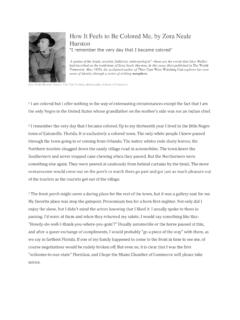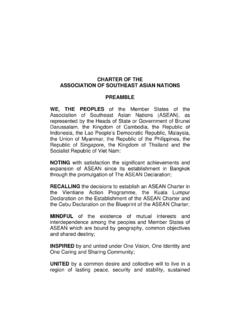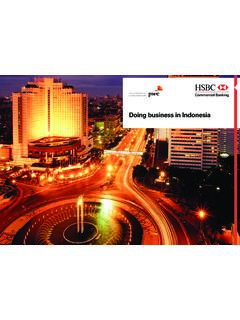Transcription of The Silk Road and its impact on globalization.
1 The Silk Road and its impact on : Alexander Arger Alex ArgerDr. StrattonHistory 10516 December 2015 The Silk Road and its impact on GlobalizationIn the novel, Life Along the Silk Road, the merchant Nanaivandak traveled the Silk Road towardChina, due to his love for mountainous terrain and his zeal for trade. For twenty years, heencountered armies who often did not harass or persecute merchants or travelers of the made frequent stops to Chang'an where he yielded considerably from his stash ofmusk, silverware, and gems. There he was confronted with peoples from all over speaking indifferent tongues, bargaining for the gems, spices, and other goods sold. Distinguishing featuressuch as his wardrobe and excess facial hair separated him from the Turks, Chinese, and Tibetanspresent there.
2 In the later years of the Silk Road it was increasingly uncommon for China towelcome foreigners, but Nanaivandak was lucky enough to live in an era of relative peace.[1]Doudou Diene, the writer of the Foreword in the book The Silk Roads: Highways of culture andcommerce, wrote .. The fabled Silk Roads, far from being mere trade routes, were also culturalhighways that had played a pivotal role in linking the East and [2] Furthermore, Whitfielddescribes the Silk Road as, The movement and exchange across Central of all the othertangible and intangible cultural baggage that travels with people (religions, technologies, medicine,fashions, food).. [3] Buddhism and Islam were exchanged across different Empires while thetrade of many different materials and goods led the countries to start connecting.
3 Differentinventions, information, and languages traversed from the East and West. The Silk Road generatedforms of globalization because it aided in the exchange of cultures, goods, and of religion and cultures across the Silk Road highly supported globalization. Christianityfrom the West, Islam from the Middle East, and Buddhism from the East soon intermingled alongthe Silk Road. Buddhism, just like Islam, a few centuries later spread mainly along trade routes.[4]Trade created possibilities for the expansion of religion. Buddhism was practically the first religionthat was well established throughout two regions of Central asia Tukharistan/Afghanistan and 1 / 5 Transoxiana/Uzbekistan and Kazakhstan. The religion of Buddhism was spread by missionariesfrom India, who traveled to China and practiced and preached their messages about India, Buddhism first went to Bengal and then Sri Lanka.
4 Sri Lanka became strongly Buddhistand followed the Theravada model. Large statues of Buddha even lined the Silk Road. It was herethat many of the early teachings were finally written down. Buddhist monks also traveled alongsideof traders, missionaries, and travelers to help spread their religion. Buddhism existed on theTibetan plateau briefly before they too converted to Islam; however, Buddhism survived mainly onthe eastern edges of the Silk Road southeast asia , China, Japan, and Korea and continues itsdecline in its birth place on the Indian subcontinent. Nevertheless, a religious transformation beganand Islam was starting to overcome Buddhism. Central asia gradually became a largely Islamicregion with Transoxiana being Islam s center in the east. This change in Central asia led it tobecome an important center for communications; this connected it with more cultures, countries,and traditions.
5 [5] The Islamic religion had made other people convert by force; not as pleasantly asBuddhists. During the Mongolian Empire, the expansion of Islam was prominent. Islam was broughtto the coastal cities of India by the Arab traders, and the Turks brought it to the north.[6] Thespread of Islam toward the east was accomplished by a combination of conquest, missionary effortled by Sufis, and the gradual Muslim commercial takeover of the Silk Road. The Arab conquests ofthe Sogdian empire resulted in the conversion of many people. Unlike the previous two religions,Christianity dominated on the European edge of the world and until the Ottoman conquest inConstantinople. Axum has also kept its Christianity alive.[7] According to Foltz, EasternChristianity and Manicheanism were the big losers on the Silk Road.
6 This, he attributes to theirisolation once the Mongolian Empire disintegrated.[8] Christians often bribed individuals or hiredmercenaries to convert the people during this time; however, during the time of the crusades, muchmore forceful tactics were expressed. Buddhism, Islam, and Christianity today are among theworld s most populous religions. They are all found throughout the globe and without the help ofthe Silk Road, the initial diffusion of religions would have not been , trading along the Silk Road significantly influenced globalizing around the world. Silk, thematerial that gave the east-west trade route its name, is evidence of globalization because it wasseen in Rome during a time where only China could have produced it.[9] Chinese silk had alsoreached the Mediterranean during the second century BC, and being the first significant commodityto be exported from east to west, silk gave its name to the route.
7 [10] There was a high demand forexotic and prestigious items for uses of adornment, decoration, and consumption in theMediterranean, Basin, India, and China. Traders such as Nanaivandak made extreme wealthduring this time selling these desired items. [11] From consumption came the need for spices suchas cinnamon, pepper, ginger, cardamom, cloves, and nutmeg. This spice trade led to the firstserious involvement of Europeans in southeast asia , and it also began the formation of colonialempires; this was mainly due to the fact that cloves were only found in China. Trading of spices,particularly cloves, created the growth of numerous states on the routes from the Indies to theMediterranean.[12] Also, nearly all vegetables and crops like sugar and rice were traded amongstseveral countries.
8 For adornment, the people wanted perfumes, precious stones, pearls, silks and 2 / 5muslin, horses, tortoise shell, ivory, rhinoceros horn, dyes, unguents, and one of the mostimportant was jade.[13] Jade's true value came with its toughness and durability. This beautifulgem was highly praised in China. Jade was in high demand because of its special affinity forwomen and because of the lack of supply in the West. Secondly, Jade was especially desiredbecause diving for Jade would have been a perverse way of committing suicide. Trading was theunderlying force transpired on the Silk Road connecting the East and West.[14]Lastly, the sharing of ideas and knowledge led globalization to thrive. Music was a commonexpression shared amongst many.
9 By the later part of the sixth century, Central Asian musiciansand dancers traveled on either horseback or camels to China, and subsequently music anddancing became the most famous in China. A man from northwestern asia was able to modify theIndian digits and transform them into Arabic numerals. This man also invented algorisms andalgebra; he then spread these inventions across asia and many countries. Several books werewritten about new findings which were spread across the world and globalized the nations withinnovative mathematical, astronomical, musical, and scientific studies. One important invention bythe Chinese was paper and their knowledge about its manufacturing processes in which spreadfirst from China to Central asia then to Baghdad, and eventually all over the globe.
10 [15] Thediffusion of advances in science, technology, economy, art, and literature continued throughoutAsia.[16] The invention of porcelain and its technology for the means of production of it in Chinacreated a large demand across Eurasia. Although the ease of travel across the Silk Road aided inthe spread of expertise, it also transmitted the plague and other diseases resulting in the death ofmillions. However; vaccinations were soon generated and shared between countries.[17] Accordingto Whitfield, Afro-Eurasia remained a connected world where the lives of ordinary people weretouched, even if in small ways, by the culture, technologies, and goods from distant lands. [18]Through the use of trading, expanding cultures, and sharing innovative ideas, the world was able toglobalize.





